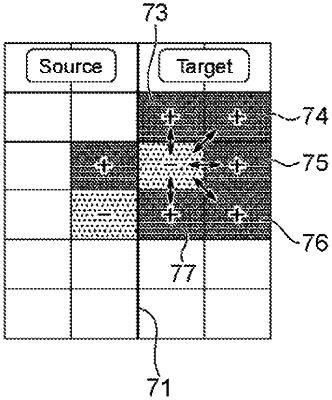| CPC G11B 20/10379 (2013.01) [G06F 3/00 (2013.01); G06F 16/35 (2019.01); G06N 7/01 (2023.01); G06F 16/355 (2019.01); G06V 10/7715 (2022.01); G06V 10/7747 (2022.01); G06V 10/84 (2022.01)] | 9 Claims |

|
1. An information processing apparatus, comprising:
at least one memory; and
electric circuitry including at least one of a field programmable gate array (FPGA), an application specific integrated circuit (ASIC), and at least one processor configured to read and operate according to program code stored on the at least one memory, the electric circuitry configured to:
extract features from a sample of a first class and a sample of a second class contained in a source domain, and a sample of the first class contained in a target domain, respectively, each domain containing at least one sample, each sample having a class, the second class being different from the first class;
generate pseudo-samples of the second class in the target domain based on a distribution of samples of the first class contained in the target domain in a feature space of the extracted features; and
perform data transformation in the feature space by machine learning such that a distribution of samples of the first class and samples of the second class contained in the source domain approximates a distribution of samples of the first class and the pseudo-samples of the second class contained in the target domain,
wherein the pseudo-samples of the target domain are configured to supplement the samples of the target domain in a domain adaptation of a machine learning model from the source domain to the target domain,
the electric circuitry is further configured to estimate a first confidence score of the distribution of samples of the first class contained in the target domain in the feature space, and generates the pseudo-samples based on a gradient of the estimated first confidence score,
the electric circuitry is further configured to estimate a second confidence score of the distribution of samples of the second class contained in the source domain in the feature space, and generates the pseudo-samples based on a gradient of the estimated second confidence score, and
the electric circuitry is further configured to combine the first confidence score and the second confidence score, and to resample the generated pseudo-samples based on a combined confidence score so as to distribute the resampled pseudo-samples in a region having a higher combined confidence score in the feature space.
|